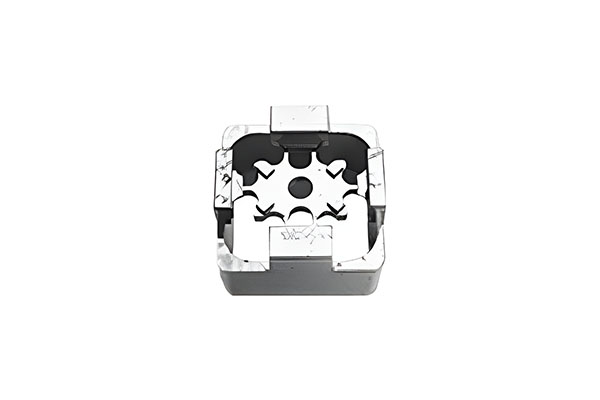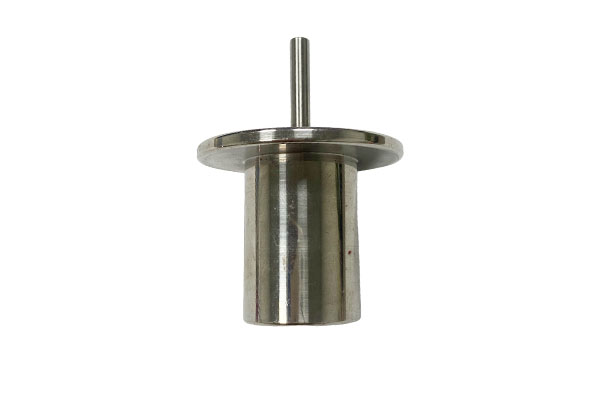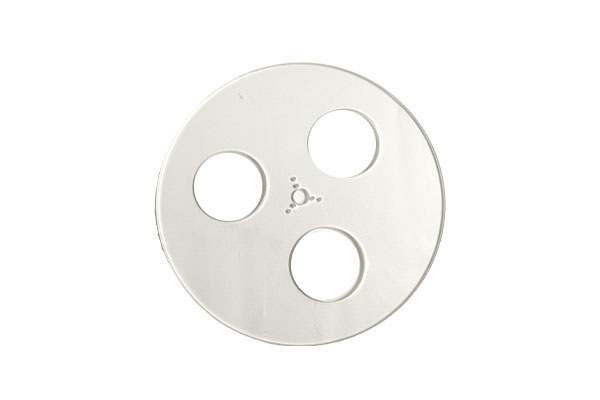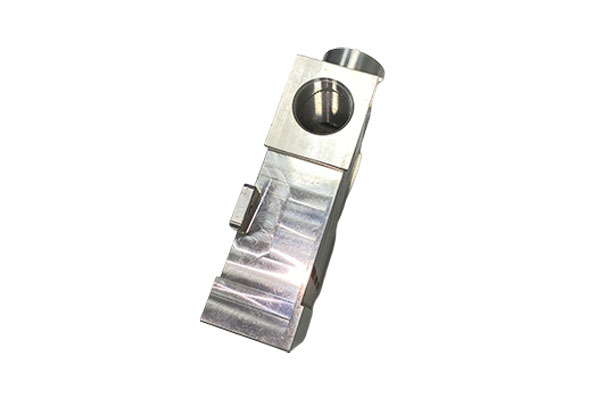What complex metal parts can be processed using wire cutting parts processing?
Release Time : 2025-10-21
In modern precision manufacturing, the complexity of metal parts is increasing. Traditional machining methods such as turning, milling, and stamping often struggle with high-precision, irregularly shaped structures. However, wire cutting parts processing, with its unique principle of electrical discharge ablation, has become a powerful tool for processing complex metal parts. Wire cutting technology, particularly in industries such as mold manufacturing, aerospace, medical devices, and precision instruments, is widely used to process a variety of complex metal parts due to its advantages such as high precision, lack of mechanical stress, and ability to process high-hardness materials.
1. Breaking through Traditional Limitations: The Processing Principle and Advantages of Wire Cutting
Wire cutting parts processing uses a moving metal wire as an electrode. A pulsed voltage is applied between the workpiece and the wire electrode, generating an electric spark discharge that locally melts or vaporizes the metal material, achieving a non-contact cutting method that "uses softness to overcome hardness." Because the cutting process does not rely on mechanical cutting force, it is not limited by material hardness. Even hard metal materials such as hardened steel, cemented carbide, and titanium alloys, which are difficult to process with traditional tools, can be easily cut. This characteristic makes wire EDM particularly suitable for machining precision parts after heat treatment, avoiding deformation caused by secondary machining.
2. Complex Geometric Shapes
One of wire EDM's most prominent capabilities is its ability to precisely machine complex 2D and 3D contours that are difficult to achieve with traditional processes. First, it can easily cut any closed internal cavity, such as special-shaped holes, internal grooves, and spiral grooves. For example, common structures in the mold industry, such as inserts, ejector pin holes, and slider guides, often have irregular shapes. Wire EDM can precisely form these shapes in a single pass, eliminating the need for multiple assembly steps. Second, wire EDM can achieve extremely small internal corner radiuses. Because the electrode wire diameter is typically only 0.1-0.3mm, it can cut sharp corners with extremely tight R-angles, which are impossible with traditional milling tools due to tool radius limitations. This is particularly important for hardware connectors and positioning components that require high fit precision. Wire EDM can also process narrow gaps and fine features with high aspect ratios. For example, in precision hardware such as electronic connectors and sensor housings, it's often necessary to cut slits or micro-holes with widths less than 0.2mm. Wire EDM, with its high positioning accuracy and stability, can reliably achieve this type of micromachining.
3. 3D and Tapered Cutting: Pushing the Boundaries of Complexity
Although wire EDM primarily performs 2D contour cutting, modern CNC wire EDM equipment now has the capability to process tapers. By independently controlling the upper and lower guide wheels, the electrode wire can be tilted at a specific angle in the Z-axis, enabling the machining of tapered holes and sloping wall structures. This feature is widely used in stamping dies and parts requiring high draft angles, significantly increasing part design freedom. More advanced 5-axis EDM equipment can even achieve 3D trajectory cutting of curved surfaces, making it suitable for the manufacture of high-end hardware parts such as aircraft engine blade roots and complex curved molds, further expanding its ability to process complex shapes.
4. Exemplary Applications for Micro and High-Precision Parts
In the medical and microelectronics fields, wire EDM is used to process ultra-precision hardware parts such as microsurgical instruments, micro gears, and micro springs. These parts are often tiny and complex, demanding extremely high surface quality and dimensional consistency. Wire EDM not only achieves micron-level machining accuracy but also ensures excellent surface finish, reducing subsequent polishing steps.
Hardware wire cutting parts processing, with its non-contact, high-precision capabilities, and ability to process high-hardness materials, is highly effective in processing a wide range of complex metal parts, including irregular holes, narrow slits, microstructures, sharp corners, tapered contours, and even three-dimensional surfaces. Whether it's core mold components, aerospace structures, or micro-precision instrument parts, wire EDM demonstrates irreplaceable machining advantages.
1. Breaking through Traditional Limitations: The Processing Principle and Advantages of Wire Cutting
Wire cutting parts processing uses a moving metal wire as an electrode. A pulsed voltage is applied between the workpiece and the wire electrode, generating an electric spark discharge that locally melts or vaporizes the metal material, achieving a non-contact cutting method that "uses softness to overcome hardness." Because the cutting process does not rely on mechanical cutting force, it is not limited by material hardness. Even hard metal materials such as hardened steel, cemented carbide, and titanium alloys, which are difficult to process with traditional tools, can be easily cut. This characteristic makes wire EDM particularly suitable for machining precision parts after heat treatment, avoiding deformation caused by secondary machining.
2. Complex Geometric Shapes
One of wire EDM's most prominent capabilities is its ability to precisely machine complex 2D and 3D contours that are difficult to achieve with traditional processes. First, it can easily cut any closed internal cavity, such as special-shaped holes, internal grooves, and spiral grooves. For example, common structures in the mold industry, such as inserts, ejector pin holes, and slider guides, often have irregular shapes. Wire EDM can precisely form these shapes in a single pass, eliminating the need for multiple assembly steps. Second, wire EDM can achieve extremely small internal corner radiuses. Because the electrode wire diameter is typically only 0.1-0.3mm, it can cut sharp corners with extremely tight R-angles, which are impossible with traditional milling tools due to tool radius limitations. This is particularly important for hardware connectors and positioning components that require high fit precision. Wire EDM can also process narrow gaps and fine features with high aspect ratios. For example, in precision hardware such as electronic connectors and sensor housings, it's often necessary to cut slits or micro-holes with widths less than 0.2mm. Wire EDM, with its high positioning accuracy and stability, can reliably achieve this type of micromachining.
3. 3D and Tapered Cutting: Pushing the Boundaries of Complexity
Although wire EDM primarily performs 2D contour cutting, modern CNC wire EDM equipment now has the capability to process tapers. By independently controlling the upper and lower guide wheels, the electrode wire can be tilted at a specific angle in the Z-axis, enabling the machining of tapered holes and sloping wall structures. This feature is widely used in stamping dies and parts requiring high draft angles, significantly increasing part design freedom. More advanced 5-axis EDM equipment can even achieve 3D trajectory cutting of curved surfaces, making it suitable for the manufacture of high-end hardware parts such as aircraft engine blade roots and complex curved molds, further expanding its ability to process complex shapes.
4. Exemplary Applications for Micro and High-Precision Parts
In the medical and microelectronics fields, wire EDM is used to process ultra-precision hardware parts such as microsurgical instruments, micro gears, and micro springs. These parts are often tiny and complex, demanding extremely high surface quality and dimensional consistency. Wire EDM not only achieves micron-level machining accuracy but also ensures excellent surface finish, reducing subsequent polishing steps.
Hardware wire cutting parts processing, with its non-contact, high-precision capabilities, and ability to process high-hardness materials, is highly effective in processing a wide range of complex metal parts, including irregular holes, narrow slits, microstructures, sharp corners, tapered contours, and even three-dimensional surfaces. Whether it's core mold components, aerospace structures, or micro-precision instrument parts, wire EDM demonstrates irreplaceable machining advantages.







